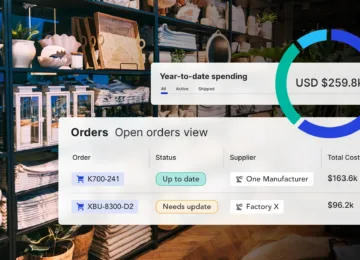As your business grows, you are going to have more products and therefore, more orders to manage in your supply chain. Having access to accurate supply chain reports are necessary for a successful operation. In this blog post, we’ll cover why you need to know the finished goods that have shipped, and how to generate this report on a regular cadence.
1. Schedule warehouse space for incoming goods
Your partners will need to know when finished goods are arriving at the warehouse to make sure there is proper space and capacity for the incoming pallets. It is best practice to keep them informed when orders are going to arrive soon. Should you have several goods arriving, we recommend informing your fulfillment center of the finished good, quantities that have shipped, and estimated delivery dates for proper planning.
2. Coordinate sales promotions for additional goods
Other internal teams would find this information valuable as well. For example, let’s say you have a new product arriving soon. Your marketing team can run a sales promotion to move the inventory so the company isn’t holding onto the inventory longer than needed. To coordinate this effort, they will need to know the SKUs that have been shipped, the quantity that was shipped, and the estimated delivery date.
3. Assess if a reorder is needed
When conducting demand and supply planning, you can assess how many goods you have on hand, how many goods you are expecting to receive, and cross-reference that with your forecasting model to verify that you’ll have enough goods to meet demand. This process will help you assess if a reorder is needed for those goods, and establish a repeatable process for matching sales orders with existing inventory and quantities of incoming goods.
How to create a shipped order report
This report can be created in a spreadsheet and manually updated when new orders are placed. Here’s how to do this:
- Each row should represent an order.
- Include the following columns in your spreadsheet:
- Order number
- SKU number
- Supplier
- Quantity
- Shipment date
- Delivery date
- Note that you must update columns D, E, and F as you receive order updates.
- When new orders are placed, add them as a new row in this spreadsheet.
Below is an example of what this report could look like.

Download a report template for shipped orders
Rather than creating the report yourself, you can download a template here.
Once you’ve populated the report, you can determine a reasonable cadence to update it and send it out to your respective external and internal partners. We recommend updating it when suppliers perform the following actions:
- Accepts a PO
- Confirms production for a PO
- Confirms shipment for a PO
- Provides a delivery date for a PO
Automatically generate the report
Do you want to have this report automatically created for you? The Anvyl platform provides reports for shipped orders that can be customized with date ranges, column filters, order milestones, and more. You can automatically run this report every week, every month, or every quarter. Chat with a specialist to learn more.



